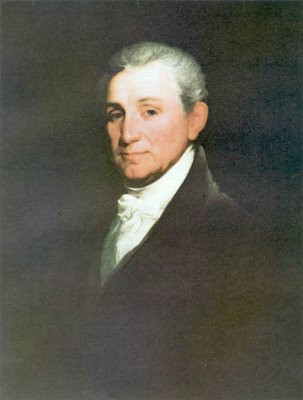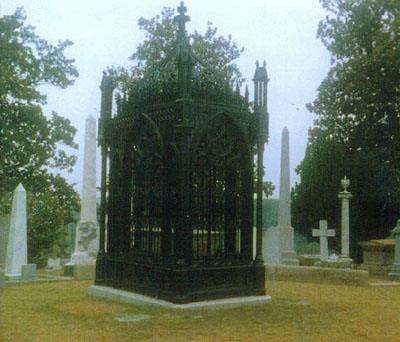You know many of our Presidents drank. Some were real boozers. I figured I would write a very short bit on the ones who were moderate to heavy drinkers.
I will only list deceased former presidents. Also we had several Presidents who drank in their youth and gave it up. They will not be listed here.
Although the Presidents that drank on average have lived longer, although the odds are changing as time goes on and people are drinking less than they once did.
I will list the age of each of these Presidents. It is quite amazing how long some of them lived. What is most interesting is that the earlier Presidents seemed to live much longer and healthier lives than many who followed them. Be they drinkers or not!
George Washington. 67
Yes he did drink quite a bit. He was very fond of Madeira wines. He had a rule at his table, and that was you could drink as much as you liked as long as you remained a gentleman. He was also one of the largest producers of whiskey as well, at his farm in Mt Vernon.
John Adams. 90
He would drink a gill of hard cider every day in the morning. That equals out to about 5 ounces. He was fond of wines and drinks. He was always a drinker and his children would suffer from alcoholism. Odd thing about Adams, he drank quite a bit, smoked and chewed tobacco and still is one of the longest living of our Presidents. He died at nearly 91 years of age. The only Presidents to live longer were Reagan and Ford nearly two centuries later.
Thomas Jefferson. 83
Oh yeah.. He loved his wines and had a massive dept often do to wine bills. He drank quite a bit of it.
James Madison . 85
Yes he drank some . He would be quite quiet, till he had a few in him. Then he would become the story teller at the dinner table.
James Monroe. 73
Yes some, and still he was not very exciting.
John Quincy Adams. 80
He was quite a Drinker. Several of his brothers died of alcoholism. He was not, but was quite a heavy drinker. He was known to be cold and forbidding, but after a few glasses of wine under his belt he was a fun dinner companion. He had many fun times playing cards and having cocktails with Dolly Madison.
Martin Van Buren 79
Yes he drank. He drank more as the years progressed
Franklin Pierce. 65
One big drunk. I guess the odd times were when he was sober. He tried while President to keep his habit under control, but failed. He was a mess. There was a joke about him that stated he was the victor of many a hard fought bottle.
When he lost his bid for re-election he said, "I guess there is nothing else to do but go home and get drunk." That he did till he died.
James Buchanan. 77
Big drinker. He complained that the booze bottles were too small in the White House. He was right behind Pierce, but unlike Pierce, he could drink massive amounts of alcohol and show no signs of being drunk or affected. He would buy 10 gallons of Whiskey a week for entertaining. He was drinking heavy as the country started to fall apart in what would become the Civil War.
He left office in 1861, meeting Lincoln he said to him "Sir, if you are as happy to enter this house as I am to leave it, you are a very happy man!" He left and returned to his home and drank.
Andrew Johnson. 68
He was not too good at handling it. Specially when he was inaugurated as Vice President. He had been ill and was offered some whiskey to calm his system down and it went right to his head.
He gave a rambling, slurring speech in which even Lincoln (who was 6 foot 4 inches tall) tried to sink low into his chair not to be seen. It was a sad thing that while Johnson was not a drunk, that event convinced everyone that he was.
U.S. Grant. 63
He liked his booze. He also was not the best at handling it either. But he could every now and then get trashed.
He was no where near the drunk he has been made out to be. One of the problems with Grant was he got massive Migraine headaches and this would make him unsteady on his feet, and slur his speech at times. But the sad part of Grant was he had a very low tolerance to alcohol. He would get rather done in by just a few drinks.
Chester A. Arthur. 56
Yep, he liked his wines, drinks, cocktails in large amounts. He gained 40 pounds while at the White House.
Grover Cleveland. 70
He loved Beer! Lots of it! Soon he weighed over 260 pounds on his 5 foot 10 inch frame. He never lost his love for the beverage. As one old man said to him at a train stop..."I have never met a President before, and you are a whopper!"
William McKinley. 58 assassinated
He liked scotch in the quiet of the evening
William H. Taft. 72
Wines and scotch were his standard fair when he was not eating. He at one point weighed in at 350 pounds and got stuck in his own bathtub. That was a night he had scotch I am sure. Also got a larger bathtub!
Woodrow Wilson . 67
He liked scotch and some wines. Sometimes at parties he would dance for the crowd, only in the privacy of friends and family though. I guess this would happen after a few drinks.
Warren G. Harding. 58
He liked his booze and had it often right in the middle of prohibition! How can anyone play cards unless they have a good adult beverage in hand. Harding did not let the law bother his drinking! Nor did he bother with such trifle things as drinking while suffering with a severely and weakened enlarged heart.
Franklin D. Roosevelt. 63
He liked Martinis his way. He would always make them. Everyone to a man later said they were terrible!
Harry S Truman. 88
He liked his booze now and then specially in his Library where the boss would not see it. The boss by the way was his wife Bess. All of the booze was kept in the library where it was hidden behind his books. It would brought out at whatever time it was needed.
Eisenhower. 78
He did not drink much, but his wife Mamie (82) was quite a drinker. She was always staggering around and loosing her balance. The secret service in those days called it an "Inner Ear Infection" .....Yes the infection was 40 proof!
John F Kennedy. 46 assassinated
He would have a few drinks in the evening usually of scotch, bloody Mary's, wine. But he was also on many drugs at the time which already made him pretty high, so the alcohol just added to the effect.
Lyndon B. Johnson. 64
He liked his booze, just his heart didn't
Richard Nixon. 81
He drank scotch. During Watergate the usage went up tremendously!
Nixon was the last of the drinkers so far. But who knows in the future who will be next and what (he or she) may drink!





















































 A funeral procession of victims..
A funeral procession of victims..

